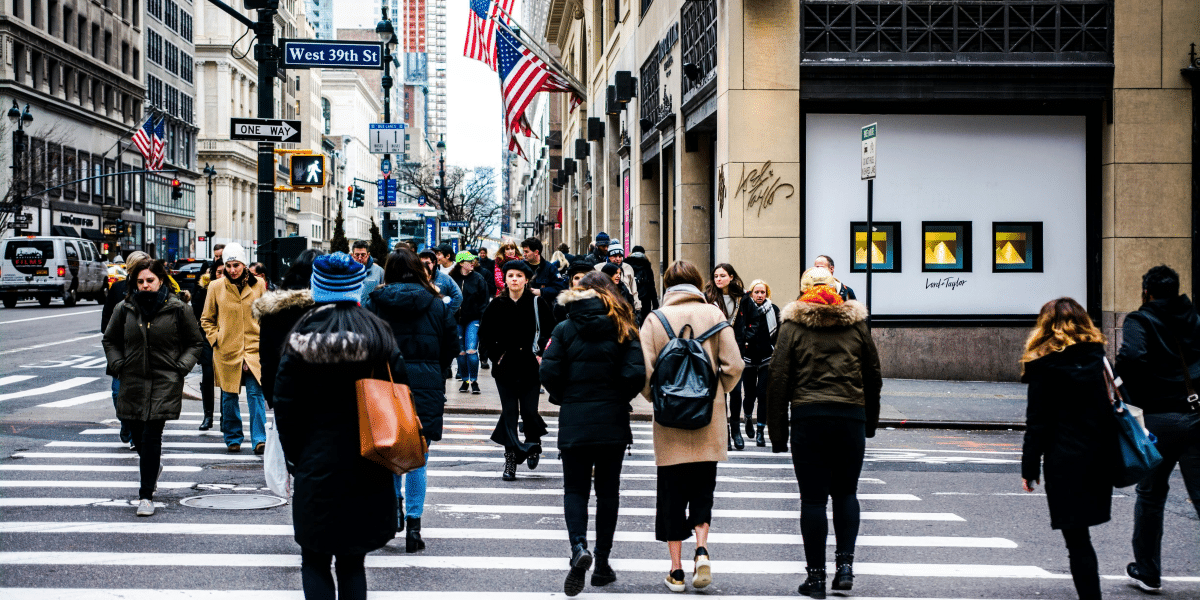Pedestrian accidents in New York City constitute a significant concern for urban safety and public health. Despite ongoing efforts to improve street safety, including initiatives like Vision Zero, the city continues to face challenges in reducing traffic-related injuries and fatalities involving pedestrians. Traffic accidents in the city paint a complex picture, influenced by a range of factors from road design and vehicle speed to pedestrian behavior and enforcement policies.
In recent years, the number of pedestrian casualties has fluctuated, reflecting the need for sustained and adaptive strategies to protect those on foot. The intricate interplay of dense urban traffic, alongside a high volume of pedestrians, makes New York City an especially critical area of focus for understanding and mitigating the risks of pedestrian accidents. Addressing these incidents requires not only reactive measures, such as enhancing emergency response systems, but also proactive efforts like improving infrastructure and driver awareness.
A review of traffic data reveals that several areas in the city are particularly prone to dangerous incidents. Investigating these hotspots provides valuable insights for city planners, policymakers, and public safety organizations aiming to enhance pedestrian welfare. Multi-agency cooperation is key in crafting an environment where both pedestrians and vehicles can coexist safely, minimizing the risk of harm and ensuring a high quality of life for all New Yorkers.
Overview of Pedestrian Accidents in New York City
In New York City, pedestrian accidents are a significant concern. It has a bustling urban environment where millions navigate the streets daily. These accidents often result in serious injuries or fatalities.
The Department of Transportation’s efforts include in-depth studies to understand the causes of accidents. For instance, the Pedestrian Safety Report and Action Plan reviews over 7,000 crash records to inform safety improvements.
In the bustling streets of New York City, pedestrian safety is a paramount concern. With the constant flow of vehicles and pedestrians, accidents unfortunately occur, leading individuals to seek the expertise of a New York City pedestrian accident lawyer. These legal professionals specialize in navigating the complexities of personal injury cases arising from pedestrian accidents, offering guidance and representation to those affected.
Interactive tools like the Vision Zero Crash & Interventions Map offer insight into traffic injuries and deaths, showcasing efforts made to enhance street safety. It displays data on crash types, dates, and locations alongside the ongoing Vision Zero initiatives. These include safety improvements such as new road designs and traffic signal adjustments specifically aimed at preventing accidents and injuries.
Despite these initiatives, traffic accidents remain a problem. In 2021, there was an increase in pedestrian deaths making it one of the deadliest years in nearly a decade. However, the city continues to fight against this trend with various measures.
- Year Before Vision Zero (2013): 299 traffic deaths
- Performance After Vision Zero Implementation: The traffic deaths dropped by 14.7% compared to 2013.
This data provides a sobering look at pedestrian safety in NYC, but also emphasizes how New York City is proactive in addressing these concerns through data analysis and implementation of safety measures.
Statistical Analysis of Pedestrian Accidents
The statistical review of pedestrian accidents in New York City reveals distinct patterns and risk factors related to frequency, location, victim demographics, and timing of these incidents.
Yearly Trends
New York City has witnessed fluctuations in pedestrian-vehicle crash severities over the years. According to research on the determinants of crash severity, a notable decrease of 54% in pedestrian-vehicle collisions was observed between 1990 and 2006.
High-Risk Locations
Certain areas of the city present higher risks for pedestrians. Studies have enabled the identification of these high-risk locations, leading to an analytical approach to determining where pedestrian accidents are more likely to occur.
Demographics of Victims
The demographic analysis of pedestrian fatalities has identified patterns among victim profiles. For instance, a New York City government brief provides insights into how age, gender, and ethnicity correlate with pedestrian fatalities.
Time of Day and Seasonality
The timing of accidents is critical in analyzing their causes and consequences. One study specifically highlights that different times of day and seasons have varying levels of pedestrian-vehicle crash severities, with some periods posing higher risks than others.
Contributing Factors to Pedestrian Accidents
Understanding the contributing factors to pedestrian accidents in New York City is essential for developing targeted interventions and improving safety. This section examines the role of driver and pedestrian behavior, as well as environmental aspects such as road and weather conditions, along with urban planning and infrastructure.
Driver Behavior
Driver behavior significantly impacts pedestrian safety. Examples of risky behavior include speeding, which reduces a driver’s ability to stop in time for pedestrians, and distracted driving, stemming from mobile device usage or other in-car distractions. In fact, research suggests that the implementation of treatments like pedestrian countdown signals at risky intersections has been effective in reducing pedestrian crash rates.
Pedestrian Behavior
Pedestrian behavior also plays a crucial role in accident risk. Jaywalking and crossing against traffic signals increase the likelihood of an incident. Additionally, pedestrians who are distracted by electronic devices may not be fully aware of their surroundings, further contributing to potential accidents.
Road and Weather Conditions
The condition of the roads and the weather at the time can create hazardous situations for pedestrians. Poor visibility during fog or heavy rain makes it difficult for drivers to spot pedestrians. Likewise, icy or slick road surfaces can lead to loss of vehicle control, increasing the risk of collisions with pedestrians.
Urban Planning and Infrastructure
Urban planning and infrastructure are pivotal in protecting pedestrians. Areas with inadequate street lighting, lack of crosswalks, or insufficient pedestrian signals are associated with higher accident rates. Studies focusing on factors affecting crash severity point towards the need for better infrastructure to decrease crash severity and potentially reduce the number of incidents.
Legal Framework Governing Pedestrian Safety
New York City’s legal framework for pedestrian safety is a comprehensive system designed to protect pedestrians through a combination of traffic laws, rights and responsibilities, and enforcement measures.
Traffic Laws and Regulations
New York City’s Department of Transportation (DOT) focuses on pedestrian safety by examining crash records to inform traffic laws and infrastructure changes. Traffic regulations include speed limits, crosswalk rules, and signals that drivers must obey to ensure pedestrian safety. These laws are updated in response to patterns identified in accident data and to accommodate changes in urban development and technology.
Pedestrian Rights and Responsibilities
Pedestrians in New York City are afforded rights that include the use of sidewalks and marked crosswalks. However, with these rights come responsibilities such as obeying walk signals, staying within crosswalks, and remaining alert while crossing streets. Pedestrian rights are delineated within state laws and local ordinances to foster a safe walking environment.
Enforcement and Penalties
Enforcement of pedestrian safety laws is critical to reducing accidents. Penalties for drivers who fail to yield to pedestrians or violate traffic signals range from fines to more severe consequences such as license suspension. Similarly, pedestrians may face penalties for jaywalking or impeding traffic flow. Law enforcement agencies and the judicial system work together to ensure pedestrian laws are adhered to, and these entities adjust their strategies based on trends in pedestrian safety metrics.
Impact of Pedestrian Accidents
Pedestrian accidents in New York City carry significant economic costs, strain healthcare resources, and deeply affect communities and social dynamics.
Economic Costs
The financial implications of pedestrian accidents are substantial. Settlements for injuries can reach into the millions, such as a $2.25M School Bus Injury Claim for a student in the Bronx, illustrating the high compensation costs associated with severe incidents.
Healthcare Burden
Healthcare systems are heavily burdened by pedestrian accidents, with an estimated 130,000 pedestrians requiring emergency medical services annually in the U.S. due to traffic-related injuries. New York’s hospitals and emergency services are consistently taxed by the critical care needs of these accident victims.
Social and Community Impact
Pedestrian accidents resonate beyond the immediate victims, affecting families and communities. Disruptions to the social fabric can occur with community members often rallying for pedestrian safety improvements following tragic incidents, reflecting a collective call to action for enhanced protective measures.
Prevention and Safety Measures
In addressing pedestrian accidents, New York City has implemented a multifaceted approach to enhance safety. Focused on reducing traffic-related injuries and fatalities, these measures include public campaigns, infrastructure upgrades, and technological advances.
Public Awareness Campaigns
Pedestrian safety in New York City is boosted through targeted public awareness campaigns. These initiatives aim to educate both pedestrians and drivers on safer street usage practices, emboldening them with knowledge to avoid accidents. The NYC Department of Transportation’s report emphasizes the role of data in shaping such educational programs.
Safety Improvements in Infrastructure
Strategic safety improvements in infrastructure have shown to be pivotal in preventing accidents. This encompasses the redesigning of intersections, the extension of pedestrian crossing times, and the construction of pedestrian islands. Each alteration serves to directly address the historically problematic areas identified in the DOT’s action plan.
Technology and Innovation in Traffic Management
Finally, New York City is capitalizing on technology and innovation in traffic management to further protect its pedestrians. Advancements include introducing pedestrian countdown signals and developing smart traffic signals that respond to real-time street conditions, both of which are instrumental in mitigating traffic conflicts and enhancing pedestrian visibility.
Disclaimer: “The content in this article is provided for general knowledge. It does not constitute legal advice, and readers should seek advice from qualified legal professionals regarding particular cases or situations.”
Published by: Martin De Juan



















